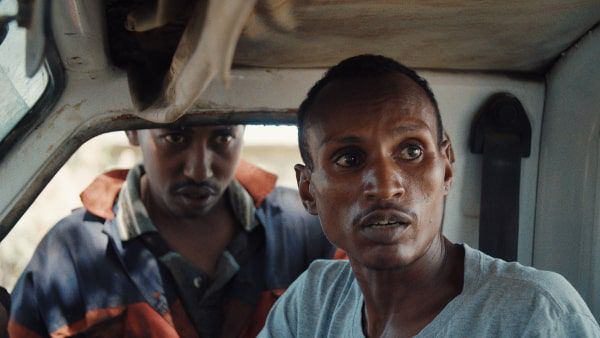Eye For Film >> Movies >> When Lambs Become Lions (2018) Film Review
When Lambs Become Lions
Reviewed by: Jennie Kermode

When an elephant dies, they say, it screams just like a human. You can hear it for miles.
60 elephants were killed by poachers in Kenya in 2017, the year when this film was shot. That's 36 fewer than in the previous year, largely thanks to government-led efforts to clamp down on the ivory trade. President Uhuru Kenyatta has asserted that the ivory belongs only to the elephants and the elephants belong to all of Kenya, almost as if they were citizens. Here we see tusks piled up in mounds like ritual barrows, each one representing dozens of deaths - dozens of echoing screams - and set alight in order to ensure that no-one profits from it. It's a noble gesture, perhaps an essential on if the species is to be saved. It's also a tough watch for the poorest of Kenya's people, those struggling to earn enough money to put food on the table.

Playing out in documentary form a story that recalls 2018's rhino-poaching drama Sides Of A Horn, Jon Kasbe's film follows cousins Asan and X (both pseudonyms). Former poacher Asan is now a ranger, working, as he sees it, to preserve his country's heritage, yet owed several months' back pay and finding it increasingly hard to provide for his family. X is the descendant of a long line of elephant hunters and the organiser behind a small scale poaching operation, employing a specialist in poison arrows to do the dirty work whilst he finds buyers and makes deals. X speaks of what he does with regret as if, by lamenting it enough, he can atone.
Kasabe stuck close to this small rural community for months before shooting began, getting so close to the men that they seem to forget he's there and openly discuss illegal actions. One one occasion he films a man getting beaten by the rangers, illustrating that, for all that they might be seen as heroes, there's no comic book purity to them. His own moral stance is similarly equivocal given this and other incidents that his camera takes in as he does nothing. His job here is to bear witness, yet nothing seems that simple.
Unfolding with the pace of a thriller, the film seems to promise conflict between its two main subjects yet as events develop viewers will find themselves increasingly uncertain of the direction it's going to take. What's missing from the developing drama is, of course, the elephants themselves, who appear only fleetingly, almost as background characters on a tale focused on their precarity. They make their presence felt by their sheer size, by their obvious intelligence yet their distance from all the human scheming, as if they speak to a different way of living. They remind us that it is not just life but also culture that is at risk here; and yet Kasabe's work neatly illustrates, for anyone still in doubt, that cultural solutions are not enough unless accompanied by the means to sustain life after change has taken place.
Reviewed on: 04 Feb 2020

















